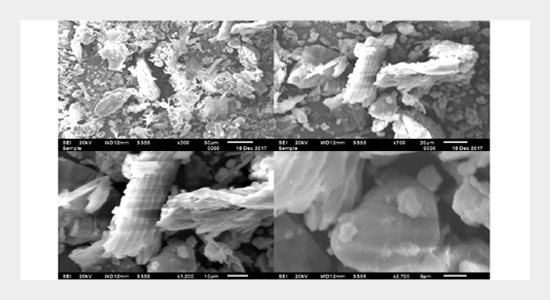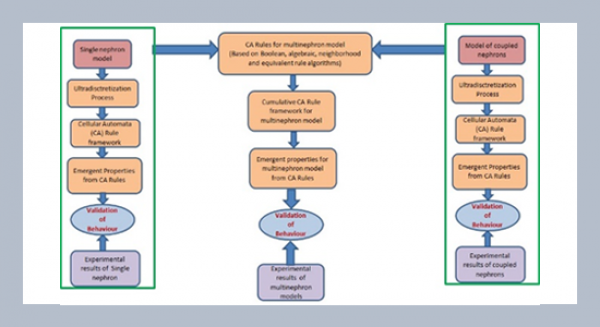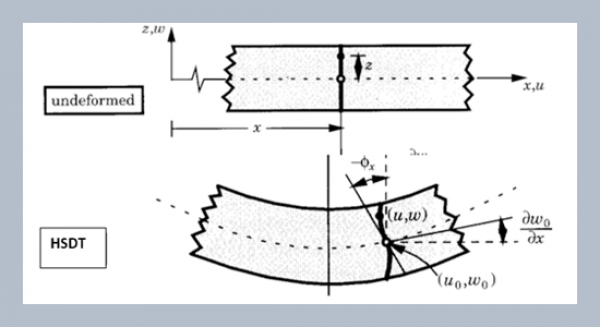REFERENCES
- [1] Gupta, K., Rastogi., A. and Nayak, A. 2010. Adsorption studies on the removal of hexavalent chromium from aqueous solution using a low cost ferilizer industry waste material. J. Colloid Interface Sci, 342, 1: 135-141. doi: 10.1016/j.jcis.2009.09.065.
- [2] Baral, A. and Robert, D. E. 2002. Chromium based regulations and greening in metal finishing industries in USA, Environmental Science & policy. 5, 2: 121-133. doi: org/10.1016/S1462-9011 (02)00028-X.
- [3] World Health Organization (WHO). 2004. Guidelines for Drinking water quality, 3rd, WHO, Geneva, 1:334.
- [4] Sud, D., Mahajan, G. and Kaur, M. P. 2008. Agricultural waste material as potential adsorbent for sequestering heavy metal ions from aqueous solutions- a review. Technol, 99, 14: 6017-6027. doi: 10.1016/j.biortech.2007.11.064.
- [5] Zahangir, A., Suleyman, A. M. and Juria, T. 2007. Statistical optimization of adsorption processes for removal of 2, 4-dichlorophenol by activated carbon derived from oil palm empty fruit bunches, J. Environ. Sci., 19: 674-677.
- [6] Montgomerry, D. C. 2001. Design and Analysis of Experiments, 5th, John Wiley Sons, New York, USA.
- [7] Tarangini, K., Arvind, K., Satpathy, G. R. and Vikas Kumar, S. 2009. Statistical optimization of process parameters for Cr (VI) biosorption onto mixed cultures of Pseudomonas aeruginosa and Bacillus subtilis. Clean-Soil,Air, Water, 37, 4-5: 319-327. doi: org/10.1002/clen.200900033.
- [8] Krishna, D., Siva Krishna, K. and Padma Sree, R. 2013. Response surface modeling and optimization of chromium (VI) removal from aqueous solution using borasus flabellifer coir powder. International Journal of Applied Science and Engineering, 11, 2: 213-226.
- [9] Krishna, D. and Padma Sree, R. 2013. Artificial neural network (ANN) and Response Surface Methodology (RSM) approach for modeling and optimization of chromium (VI) adsorption from waste water using a ragi husk powder. Indian chemical Engineer, 55, 3: 200-222. doi: org/10.1080/00194506.2013.829257.
- [10] Fan, M., Hu, J., Cao, R., Ruan, W. and Wei, X. 2018. A review on experimental design for pollutants removal in water treatment with the aid of artificial intelligence. Chemosphere, 02, 330-343. doi: 10.1016/j.chemosphere.2018.02.111.
- [11] Prakash, N., Manikandan, S. A., Govindarajan, L. and Vijayagopal, V. 2007. Prediction of biosorption efficiency for the removal of copper (II) using artificial neural networks. Hazard. Mater, 152, 3: 1268-1275. doi:10.1016/j.jhazmat.2007.08.015.
- [12] Young-Seuk, P., Tai-Soo, Ch., Inn-Sil, K. I. S. and Sovan, L. 2004. Hierarchical community classification and assessment of aquatic ecosystems using artificial neural networks. Science of the Total Environ, 327, 105-122.
- [13] Gamze Turan, N., Basak, M. and Okan, O. 2011. Artificial neural network (ANN) approach for modeling of Zn(II) adsorption from leachate using a new biosorbent. Eng. J, 173, 1: 98-105. doi: 10.1016/j.cej.2011.07.042.
- [14] Buckeles, B. P. and Petry, F. E. 1992. Genetic Algorithms, IEEE Computer Society Press, Los Alamitos, CA.
- [15] Bundy (Ed), A. 1997. Artificial Intelligence Techniques; A Comprehensive catalogue, Fourth Ed., Springer-Verlag, New York.
- [16] Fan, M., Hu, J., Cao, R., Xiong, K. and Wei, X. 2017. Modeling and prediction of copper removal from aqueous solutions by nZVI/rGO magnetic nanocomposites using ANN-GA and ANN-PSO. Scientific Reports, 7, 1: 18040-18054. doi: 10.1038/s41598-017-18223-y.
- [17] Fan, M., Li, T., Hu J., Cao R., Wei, X., Shi, X. and Ruan, W. 2017. Artificial neural network modeling and genetic algorithm optimization for cadmium removal from aqueous solutions by reduced graphene oxide-supported nanoscale zero-valent iron (nZVI/rGO) composites. Materials, 10, 5: 2-22. doi: 10.3390/ma10050544.
- [18] Cao, R., Fan, M., Hu, J., Ruan, W., Xiong, K. and Wei, X. 2017. Optimizing low-concentration mercury removal from aqueous solutions by reduced graphene oxide-supported Fe3O4 composites with the aid of an artificial neural network and genetic algorithm. Materials, 10, 11: 2-17. doi: 10.3390/ma10111279.
- [19] Cao, R., Fan, M., Hu, J., Ruan, W., Wu, X. and Wei, X. 2018. Artificial intelligence based optimization for the Se(IV) removal from aqueous solution by reduced graphene oxide-supported nanoscale zero-valent iron composites. Materials, 11, 3: 1-19. doi: 10.3390/ma11030428.
- [20] Krishna, D., Santhosh Kumar, G. and Prasada Raju, D. R. 2017. Removal of chromium (VI) from waste water using mixed adsorbent. International Journal of Current Engineering and Scientific Research, 4, 10: 28-42.
- [21] Goel, J., Kadirvelu, K., Rajagopal, C. and Garg, V. K. 2005. Removal of lead (II) from aqueous solution by adsorption onto carbon Aerogel using Response surface methodologyapproach. Eng. Chem. Res, 44, 7: 9354-9362. doi: org/10.1021/ie0490684.
- [22] Yetilmezsoy, K., Demirel, S. and Vanderbei, R. J. 2009. Response surface modeling of Pb(II) removal from aqueous solution by Pistacia Vera L: Box-Behnken Experimental Design. J. Hazard. Mater, 171, 1-3: 551-562. doi: org/10.1016/j.jhazmat.2009.06.035.















